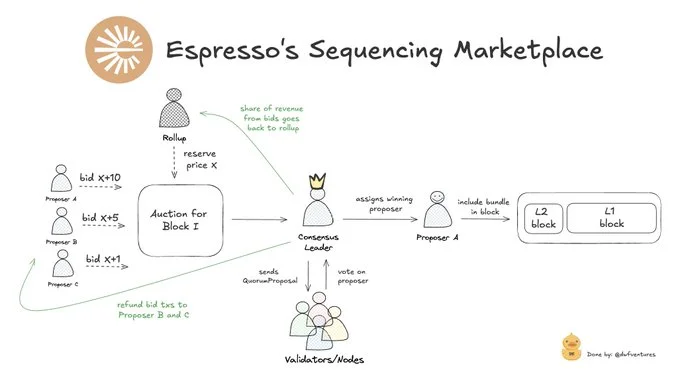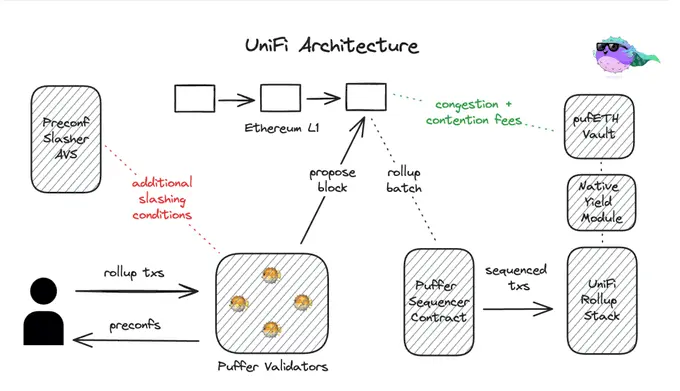As Layer 2 (L2) solutions for Ethereum continue to grow, the blockchain space has faced a new issue: centralisation and liquidity fragmentation, with over 74 L2s live, and even more to be launched. This article explores how the emergence of based rollups could alleviate these issues, and some of the most prominent applications of this technology.

First Off: What is a Based Rollup?
Before we dive into the based rollups, let’s revisit the very concept. Rollups are L2 scaling solutions for Ethereum that process transactions off-chain, ensuring reduced transaction costs compared to the base L1 blockchain.
Initially, there were optimistic and zero-knowledge (ZK) rollups. They both bundle multiple transactions and submit them as a single transaction to Ethereum’s main chain to achieve both high scalability and security.
Based rollups represent a more recent evolution of rollups, offering enhanced decentralisation and security by using Ethereum's validators for transaction sequencing. The latter is a process of ordering and organising transactions within a blockchain before they are confirmed and added to a block.
Sequencing is responsible for determining how and when transactions are included in the blockchain, affecting the performance and security of the network. In Ethereum, sequencing is typically managed by validators that bundle transactions from a mempool (a queue of pending transactions) and include them in blocks. In rollups, transaction sequencing is often handled by an entity known as a sequencer, which puts multiple transactions in bundles off-chain before submitting the batch to the base layer (Ethereum).
By using L1 validators, based rollups remove reliance on centralised sequencers and allow for better economic alignment between the L1 and L2 layers. With such a design, based rollups benefit from Ethereum's native consensus, offering pre-confirmations and making transaction settlement faster and more secure.
Based Rollups vs. MEV and Centralisation
One of Ethereum's key goals is reducing centralisation, particularly in the context of Maximum Extractable Value (MEV). MEV refers to the potential profit that can be extracted by controlling the order of transactions within a block, which has increasingly concentrated in the hands of centralised entities.
Based rollups offer a solution by minimising the reliance on centralised L2 sequencers, and instead, introducing decentralised block building and pre-confirmations for better user experience (UX).
In based rollups, L1 block proposers replace L2 sequencers, allowing them to include a rollup block in an L1 block in a permissionless manner. This process is significant as it improves decentralisation and ensures greater system liveness: as more L1 proposers get involved, the risk of chain outages and censorship is significantly reduced.
Pre-confirmations
Pre-confirmations is another emerging technology, crucial for understanding based rollups. This concept refers to a system where transactions receive an initial confirmation before they are fully finalised on the L1's main layer. With pre-confirmations coming to based rollups, users get a ‘confirmation’ that their transaction is likely to succeed within seconds, even though the final settlement and inclusion in the L1 chain may take more time.

Shared Sequencing
Currently, L2 networks generate revenue through transaction fees and MEV, but these revenues often flow back to teams due to the centralised nature of sequencers. In contrast, based rollups distribute value back to the L1, while also adding value through shared sequencing.

Shared sequencing is a method for processing transactions across multiple rollups in a decentralised manner, aiming to reduce centralisation risks and improve cross-rollup compatibility. Instead of each rollup using its own sequencer, shared sequencing allows different rollups to submit their transactions to a common network of sequencers, which passes them to an L1 blockchain.
Shared Sequencing Marketplaces
Espresso Systems is developing a marketplace where rollups can sell sequencing rights to block proposers. This allows multiple proposers to participate in a single block, creating competition on price. As a result, rollups can earn more revenue as proposers bid above a reserve price to secure sequencing rights.

Other notable protocols working on similar infrastructure include Astria, Radius, and NodeKit. Together, they help lay the groundwork for a more decentralised and efficient rollup ecosystem.
Appchain Frameworks
One more application of based rollups is building application-specific blockchains, or appchains. An appchain is a blockchain designed and optimised for specific applications or use cases. Unlike L1s and L2s, appchains allow developers to tailor the blockchain’s architecture, governance, and consensus mechanisms to fit the unique requirements of their dapp or ecosystem. Rollups come in handy as part of an appchain infrastructure, enabling better scalability and security while maintaining the flexibility required for fine-tuning the appchain.
Rollup-based appchains are usually built with frameworks. Some of the popular examples include Polygon Supernets and Avalanche Subnets.
Spire is another player advancing the appchain framework, but with a focus on based rollups, specifically. Their based rollup framework empowers developers to create their own based appchains that are interoperable with L1 liquidity. The composability between different appchains allows users to enjoy a seamless experience without needing to bridge assets between different chains. Spire’s framework uses based rollups’ features we described, such as pre-confirmations and shared sequencing.
Cross-Chain Composability
Coinbase has also ventured into the based rollup space with its KeySpace project, which enables smart wallets to become cross-chain under a single address, simplifying cross-chain interactions and making DeFi more accessible to ordinary users.
Similarly, Taiko is another based rollup that aims to achieve synchronised composability between L1 and L2 blockchains, as well as between different L2s. This feature will allow for better arbitrage and MEV opportunities, with more value being directed back to the base layer.
Better UX and Yield Opportunities
Puffer Finance is working on a based rollup called UniFi, which offers users faster transactions through pre-confirmations and enhanced yield generation from rollup fees. Additionally, UniFi users have access to liquidity across other based appchains without fragmentation.

Overall
Although the infrastructure for based rollups is still in its early stages, several key developments are already laying the foundation for a more decentralised and efficient blockchain ecosystem. Aimed at overcoming some of the weaknesses of other rollup models, such as transparency and centralisation risks, based rollups are a pivotal addition to the rollups tech.
With the growing number of appchains and protocols adopting the based rollup model, the entire rollup ecosystem could experience exponential growth. If you’re building in this space and want to collaborate with DWF Ventures, reach out to us directly.


